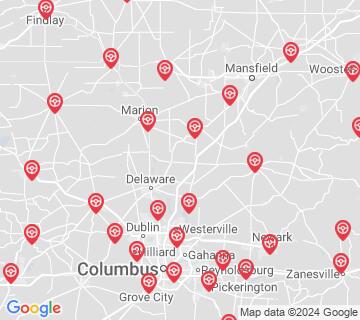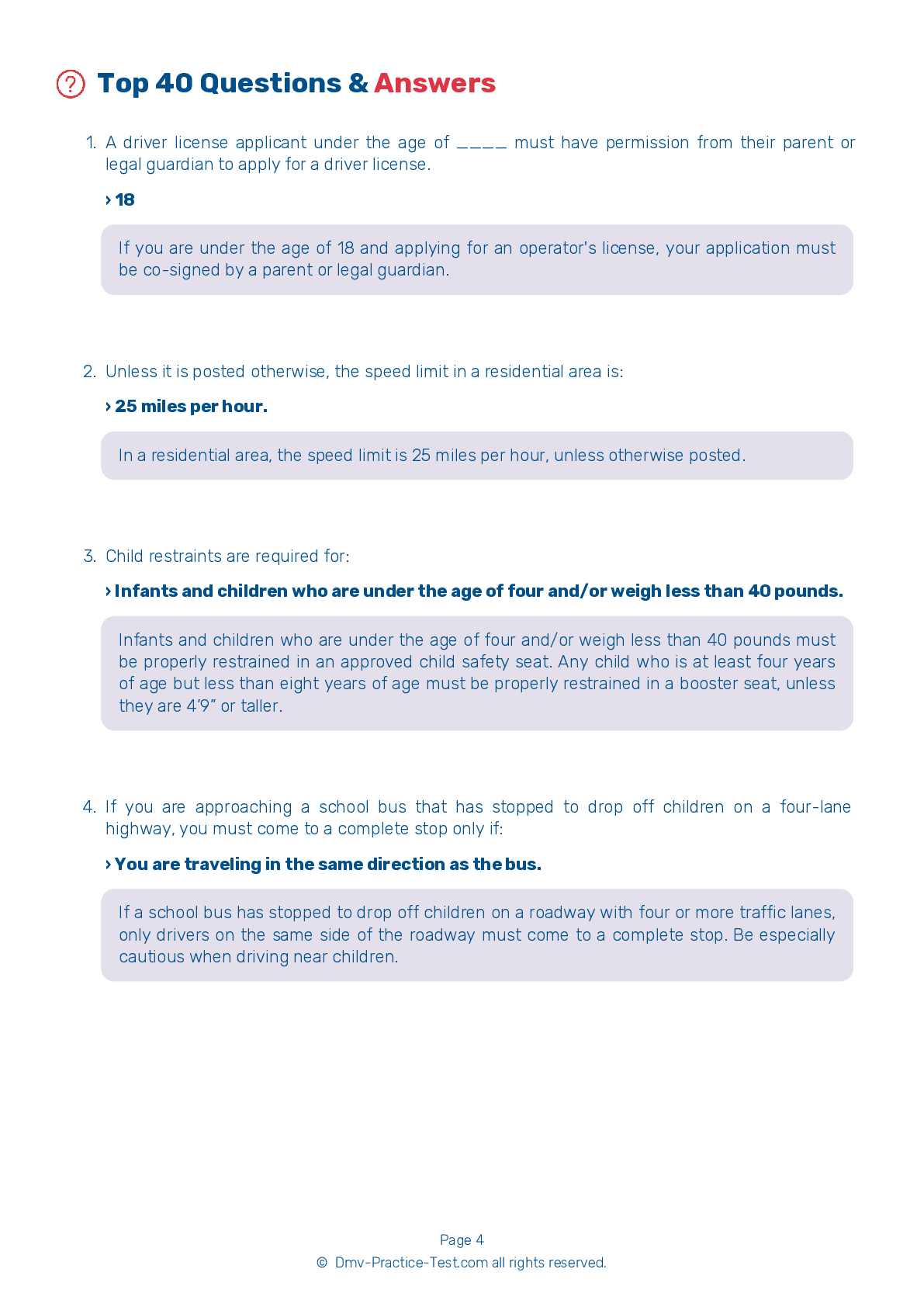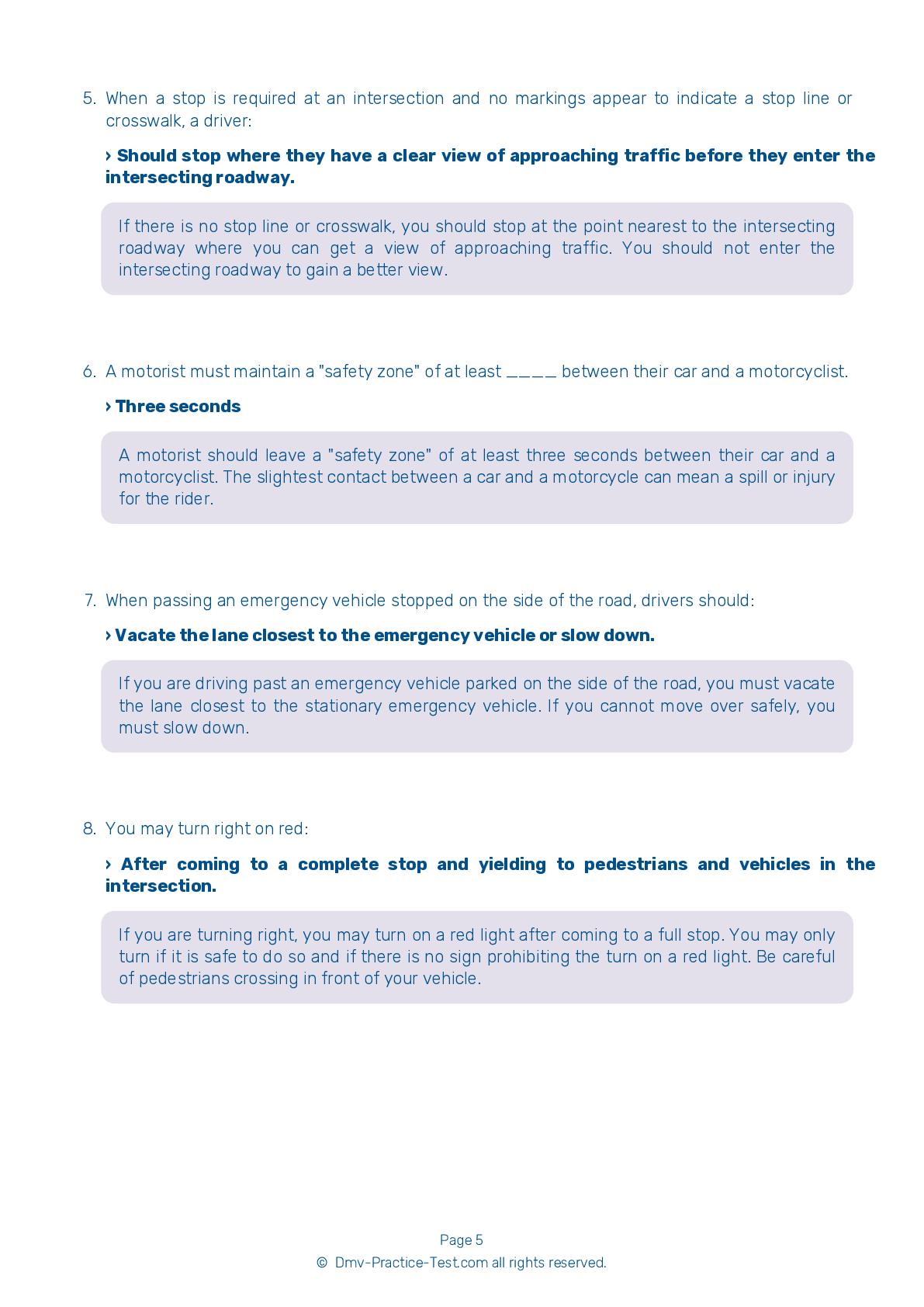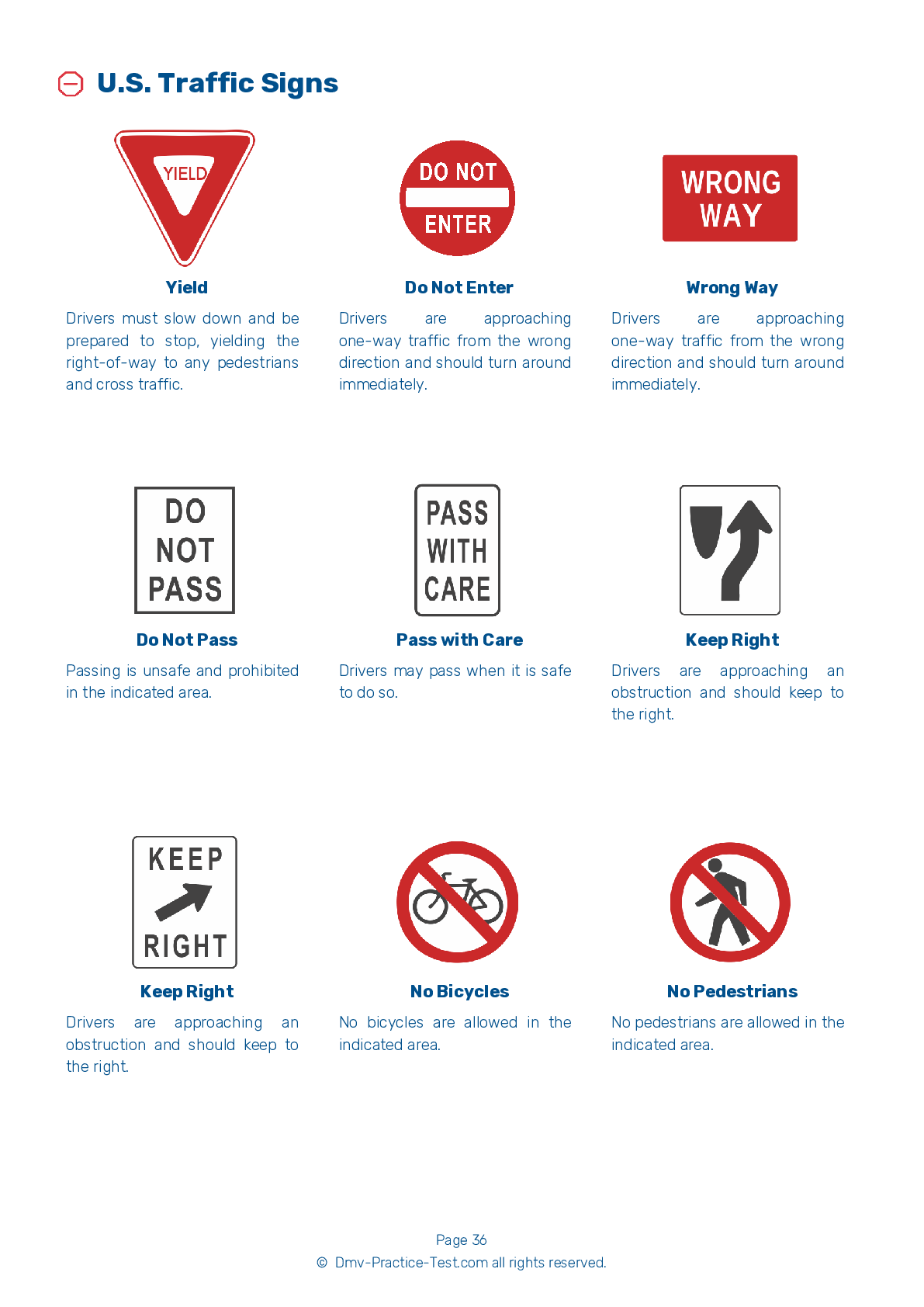FREE Ohio DMV Practice Test #9 Page 2 of 5
The practise exams for Ohio's DMV have been revised for January 2025. It comprises questions based on the most important traffic signals and laws for 2025 from the Ohio Driver Handbook. To study for the DMV driving permit test and driver's licence exam, use actual questions that are very similar (often identical!) to the DMV driving permit test and driver's licence exam.
Each question on the practise exam has a tip and explanation to help you recall the ideas. Questions about traffic rules, traffic signs, and driving statutes, as well as knowledge from the Driver Handbook, will be included in the written portion of the official Ohio DMV test.
You must properly answer 35 of the 40 questions to receive a passing mark. To help you prepare for your instruction permit or driver's licence, take this practise test from the Ohio Department of Motor Vehicles.
The DMV exam is offered in a variety of languages.
Using any form of testing help will result in an automatic fail, and the DMV may take further action against your driver's licence, so avoid it.
9 . When driving under icy or snowy conditions, which driving technique will help drivers avoid crashes?
Reduce your speed when roads are snow-covered or icy. Doing this and increasing your following distance are the most important techniques for avoiding crashes under snowy or icy conditions.
10 . This sign means:
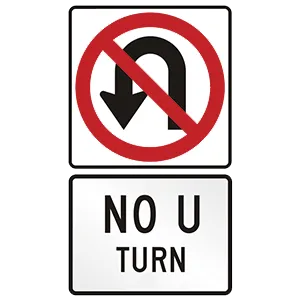
A regulatory sign displaying a red circle with a red slash through the middle indicates that a specific action is prohibited. U-turns are not permitted where this sign is posted.
11 . To enter a freeway:
When merging into traffic, you should signal and enter at the same speed that traffic is moving. Always yield to other traffic when entering a roadway.
12 . This road sign means:
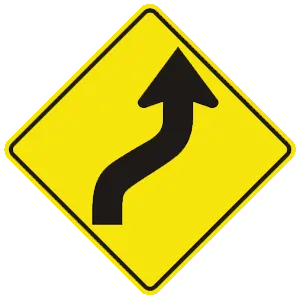
This sign indicates that the road ahead curves to the right and then to the left. You should slow down to be able to negotiate these curves safely.
13 . Where is parking prohibited?
Drivers should not park on top of a crosswalk, on a highway bridge, or in a tunnel. Drivers should only park where it is legal to do so and where other drivers can clearly see their stopped vehicle.
14 . This sign means:
.png)
Warning signs prepare drivers for upcoming road conditions and hazards and are usually yellow with black markings. This sign tells drivers to be cautious when driving under conditions that may cause the roadway to become wet and slippery.
15 . This road sign means:
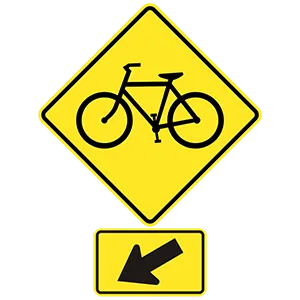
This sign (with the arrow below) indicates the location of a bicycle crossing/path. Drive with caution around this sign because bicycles likely regularly cross or ride beside traffic in the area.
16 . This sign means:

